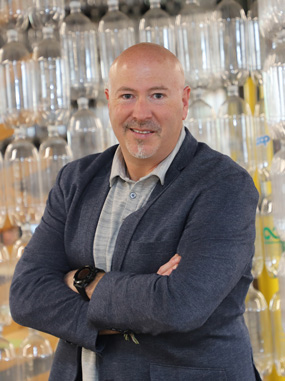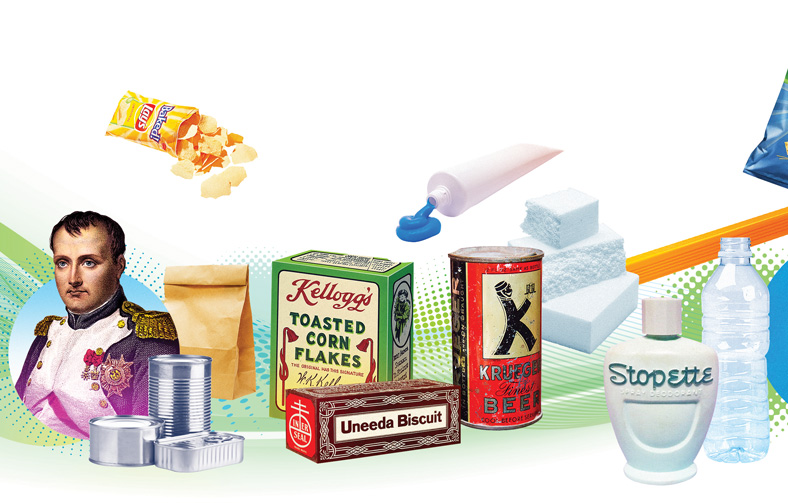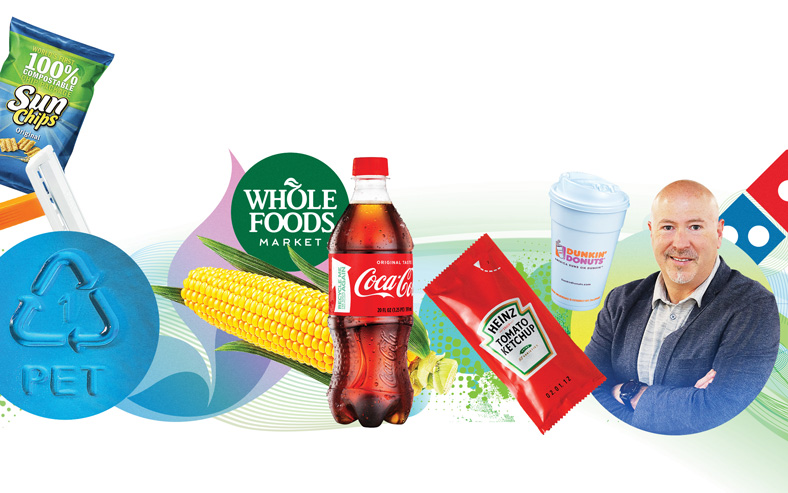
Far too often, we part with refuse—and refuse to consider the consequences. But global garbage disposal has a devastating impact the world over, along with many filthy truths.
The world produces 3.5 million tons of plastic and solid waste each day. Four trillion cigarette butts become litter annually, and the Pacific Ocean’s flotilla of plastic waste is now twice the size of Texas.
Eric Ascalon, WCL/JD ’96, can’t single-handedly fix this mounting environmental challenge, but he’s doing his share of the dirty work. Following a pandemic-inspired priority shift to avoid earning “a paycheck without doing something meaningful,” he has served since October 2021 as the North American director of community relations and strategic partnerships for TerraCycle, which specializes in waste solutions for hard-to-recycle products.
The Trenton, New Jersey–based company, one of Time’s 100 most influential of 2021, partners with hundreds of brands to establish collection programs that give Babybel wrappers and Barilla pouches, Gerber containers and Gillette razors, and even Taco Bell hot sauce packets, a life beyond the landfill. Once collected, they’re sent to one of TerraCycle’s 35 material recovery facilities in 21 countries and processed down to pellets, flakes, and powders that will enjoy a second life as everything from playgrounds to shipping pallets to—here’s some green irony—recycling bins.
“Getting consumer brands to own up to the problems that they’ve largely caused is a great thing,” Ascalon says—but TerraCycle’s work doesn’t stop there. Beyond corporate buy-in, they need “people that have the dedication and wherewithal to make something happen in their communities.”
Ascalon’s wheelhouse is the latter: thousands of schools, municipalities, businesses, and nonprofits that have teamed up with TerraCycle to establish free recycling programs. From oral care product collection bins near the principal’s office to cigarette butt receptacles on Main Street, these community partnerships have drawn participation from 202 million people worldwide and—through a points system amounting to about a dollar per pound of waste—helped recyclers raise $45 million for charity.
Ascalon tries to ensure their lift is minimal “because peoples’ behaviors are going to change when they don’t have to do much to effect change.” But with a little buy-in and a lot of collection boxes, they can change their effect on the planet.
Food Packaging: A Timeline

1795: General Napoleon Bonaparte offers 12,000 francs to anyone who can improve food preservation for French troops. The winner: Nicholas Appert, who in 1809 boils food then seals it in glass containers.
1810: British merchant Peter Durand is awarded the first patent for the use of tin cans to preserve food. Less than a decade later, canned oysters, vegetables, fruits, and meats are available for sale in New York City.
1817: The first cardboard box is produced in England by M. Treverton and Son.
1844: The English produce the first commercial paper bag. Eight years later, American Francis Wolle invents a bag-making machine, paving the way for the glued paper snack bags (think potato chips) that we enjoy today.
1862: Alexander Parkes invents the first plastic: Parkesine. The more generic plastic—derived from the Greek word plastikos, which means “able to be molded”—is later adopted.
1886: Lucius Sheffield produces the world’s first tubed toothpaste: Crème Dentifrice. Today, around 20 billion toothpaste tubes are sold each year.
1897: Nabisco is the first brand to use folding cartons, invented just a few years earlier in Brooklyn. Previously, the company’s Uneeda Biscuits were sold unpackaged in barrels.
1906: William Kellogg begins packaging his Corn Flakes in a cardboard box wrapped in wax paper. In 1924, Kellogg’s son, John, puts the heat-sealed bag inside the box. With that, the modern cereal box is born.
1908: Cellophane is invented.
1935: Krueger Beer debuts its tin-plated steel cans, which require a “church key” opener to puncture the top. In 1959, Coors introduces the less costly aluminum can.
1944: Dow Chemical files a patent for Styrofoam after rediscovering a process first formulated by Swedish inventor Carl Munters. Annually, the US churns out 3 million tons of Styrofoam, which is cheap to produce. But it comes at a cost, taking up 30 percent of the space in US landfills.
1946: Deodorant brand Stopette features one of the first commercial plastic bottles.
1955: Dale Ross and Yale Kaplan invent what will become a fast food staple: the plastic ketchup packet. Today, 855 billion single-use condiment packets are thrown away each year—enough to cover the entire surface of the planet.
1973: Engineer Nathaniel Wyeth patents polyethylene terephthalate bottles—a cheaper alternative to glass. Today, 1 million bottles are sold every minute and only 30 percent are recycled in the US.

1975: Following its success in pens and lighters, Bic markets the first single-piece, disposable plastic razor. It has sold more than 60 billion to date.
2010: Sunchips’ biodegradable bag made from polylactic acid is panned by consumers, who complain the crinkling sound is too loud.
2012: Harvard bioengineer David Edwards develops edible packaging that mimics “how nature packages fruits and vegetables.” On the menu: gazpacho in a tomato skin and wine in a grape skin container.
2013: The Bioplastic Feedstock Alliance forms to examine how best to use feedstocks like corn to produce plant-based plastics. The eight founding corporations include Procter and Gamble, Nestlé, Unilever, and the World Wildlife Fund.
2015: Coca-Cola introduces the first-ever recyclable PlantBottle made from corn and other plant material.
2016: Whole Foods is criticized for its new grab-and-go packaging, which includes pre-peeled oranges in a single-use plastic tub.
2018: Energies Market Research reports that global flexible packaging—like pouches and bags that are cheaper to produce and easier to move through the supply chain—is expected to reach $313 billion by 2024.
Kraft Heinz, which sells 11 billion ketchup packets each year, announces plans to make 100 percent of its packaging recyclable, reusable, or compostable by 2025.
Brooklyn architect Jun Aizaki creates the first fruit and biogenic packaging: a biodegradable coffee cup made with a gourd and a 3D-printed mold.
The European Union calls for the plastic packaging of all EU-sold goods to be reusable or recyclable by 2030.
2020: Domino’s ups the amount of recycled content in their pizza boxes from 40 to 70 percent. The cardboard in the boxes can be recycled up to seven times—despite a little grease.
Dunkin’ sells its last beverage in a Styrofoam cup, switching to double-walled paper.
2021: Governor Gavin Newsom signs California’s Truth in Labeling for Recyclable Materials bill, restricting deceptive recyclability claims on consumer goods by 2024.